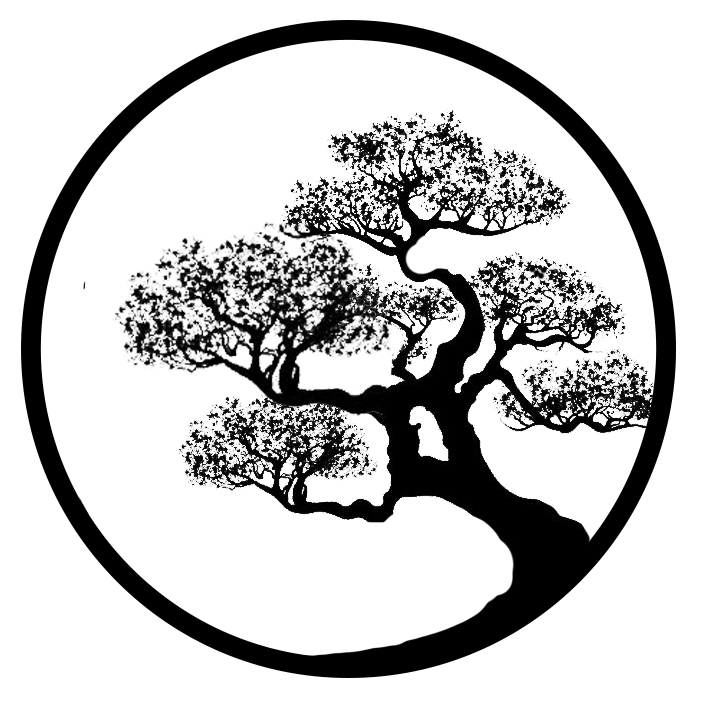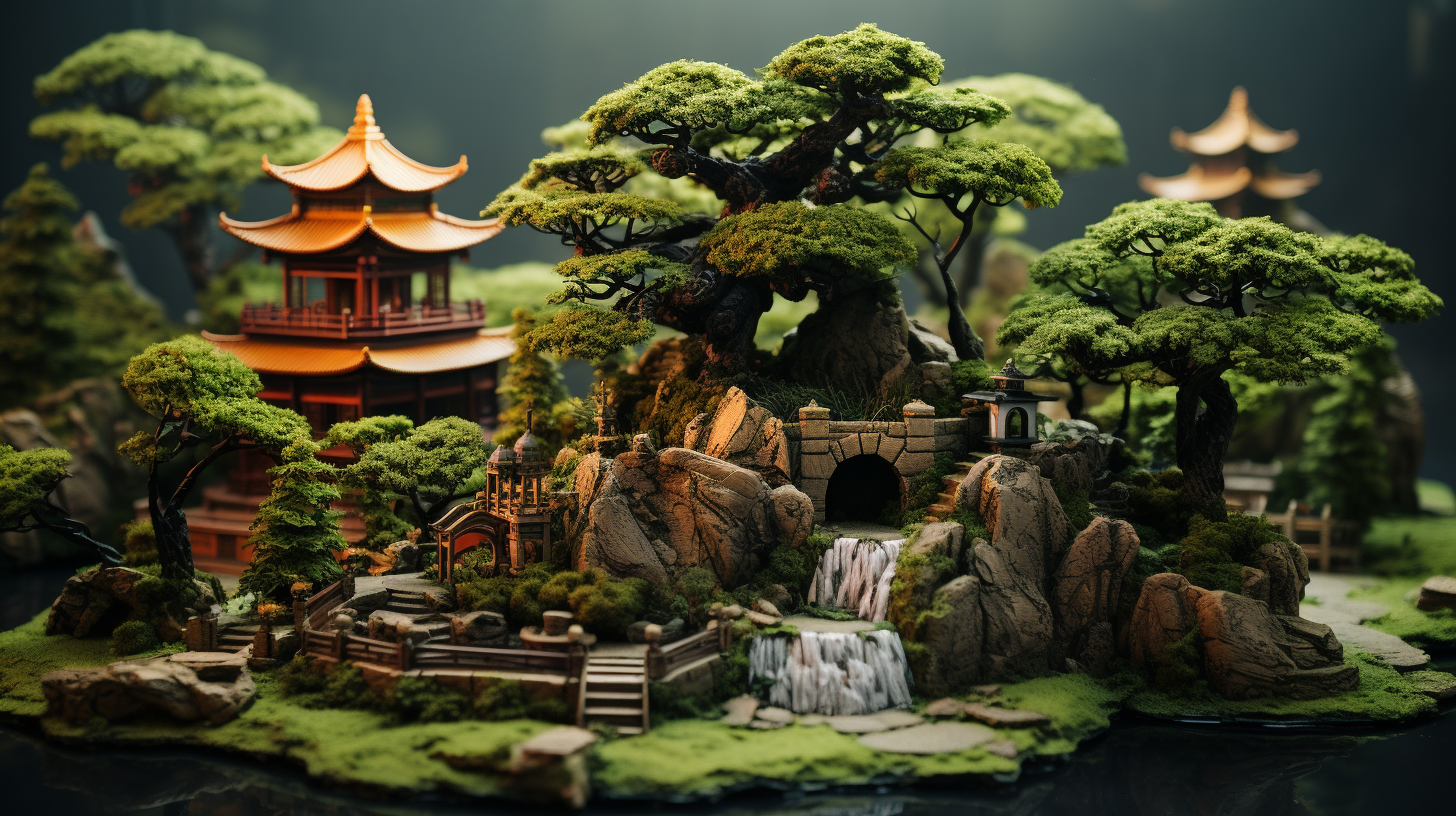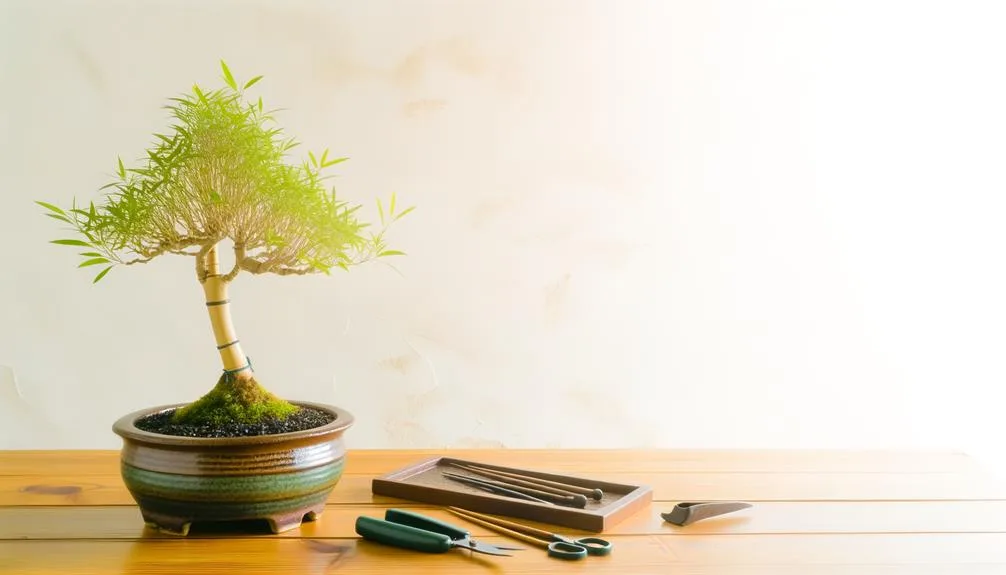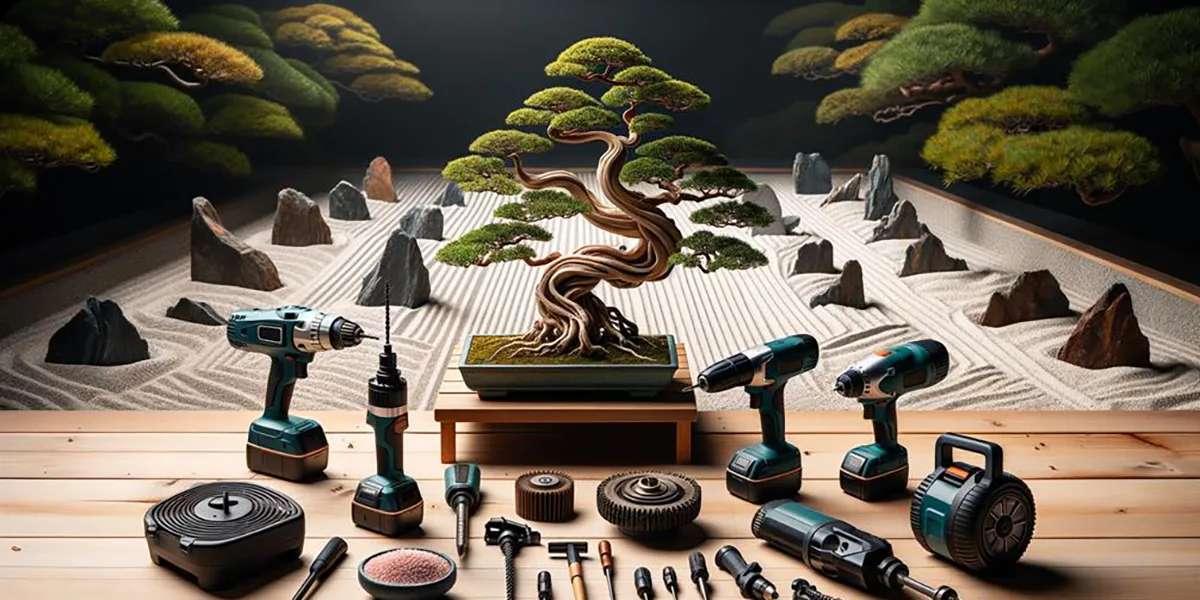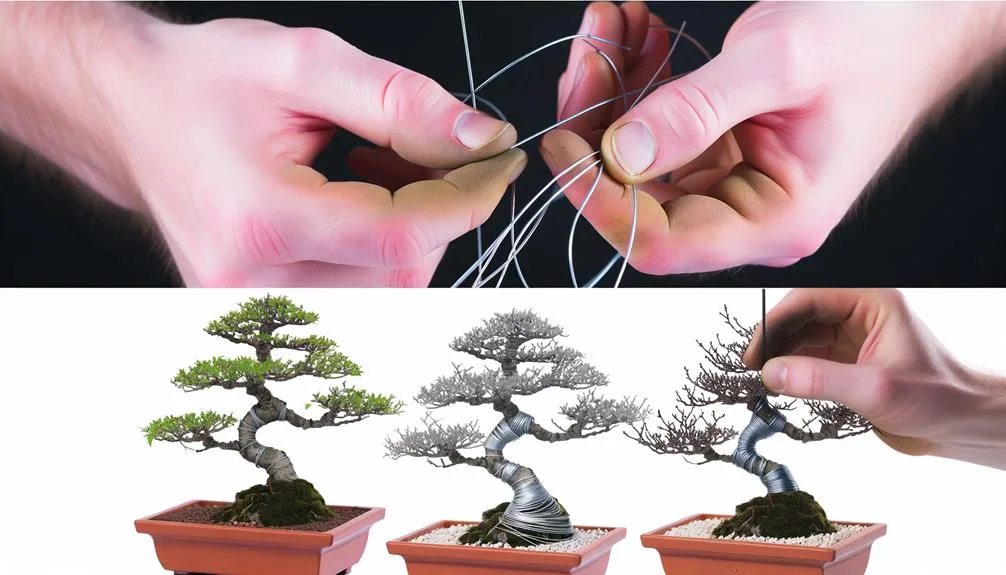Introduction To The History Of Bonsai Trees
The history of Bonsai trees, a meticulous art form originating from China, has been shaped by centuries of cultural and philosophical influence. Initially revered by Chinese Taoists for their metaphysical properties, these miniature trees were manipulated to mimic nature’s creatures.
This tradition was subsequently adopted by Japan, evolving into the refined art of penzai. In sync with Japan’s minimalist aesthetic, Bonsai trees from bonsai village, a type of tree cultivated using special techniques to grow dwarf trees in containers, encapsulate simplicity, gradually increasing the popularity of bonsai across different societal layers.
Today, Bonsai trees grown in containers, symbols of harmony, balance, and patience, and representative of the bonsai empire, are appreciated on a global scale with an increasing popularity of bonsai and related arts. Often used in bonsai pots for meditation practices, bonsai trees serve as focal points, reinforcing their historical significance and highlighting the history of bonsai in China and the history of bonsai in Japan.
Key Takeaways
- Bonsai trees originated in China around 700 AD and were introduced to Japan by Chinese monks during the Kamakura period.
- Chinese bonsai traditions aimed to encapsulate the grandeur of nature in miniature and were heavily influenced by the Taoist Five Agents Theory.
- Taoist principles shaped the aesthetics, philosophy, and practices of bonsai, emphasizing minimalist looks and pruning techniques.
- Japanese bonsai techniques involve meticulous pruning, wiring, potting, and watering, and the art form has evolved to include various styles such as Literati, Group Planting, Windswept, and Semi-cascade.
Origin Of Bonsai: The Ancient Roots
In the context of the rich, ancient roots origin of Bonsai, the artistry began around 700 AD in the Chinese empire. It was profoundly influenced by Taoist monks who discovered miniature trees in the mountains. These dwarf trees, or ‘Bonsai’ as we know them today, were pruned and manipulated into compact forms that embodied the Taoist belief in the mystical properties of nature. The art form then originated in Japan some years later when Chinese monks introduced the concept.
The Japanese took to this art form, refining and developing their unique techniques for growing these miniature trees. This adaptation reflects the Japanese philosophy of ‘less is more’. The aesthetic of bonsai trees in Japan evolved to be deliberately minimalist, subtly hinting at the profound influence of Zen Buddhism.
Over the centuries, bonsai has transcended its aristocratic roots to become a widely practiced art form. Today, the art of bonsai aims to encapsulate the natural beauty of trees in a controlled, miniature form, symbolizing balance and harmony. It is a testament to the patience and precision required in growing these dwarf trees, underlining a profound respect for nature’s intricacies.
History Of Bonsai In China
Chinese Bonsai Traditions
Several centuries ago, the Chinese empire started the art of ‘pun-sai ’ using special techniques, the precursor to modern bonsai, which aimed to encapsulate the grandeur of nature in miniature, potted trees. This art of bonsai was born from the Chinese arts gathered over centuries, culminating in a unique tradition of dwarfed, potted trees.
The Taoist Five Agents Theory heavily influenced the Chinese bonsai traditions. The creation of these tray-planted trees was a meticulous process:
- The trees were carefully pruned and bound into twisted forms, resembling animals.
- They were then placed in shallow basins or flattened bowls, to create a miniature replica of a landscape.
A significant event in the history of bonsai was the depiction of these miniature landscapes in the tomb of Prince Zhang Huai in 706 AD. This marked a significant cultural acceptance and appreciation of this ‘tree in a pot’ art form.
Taoist Influence on Bonsai
Concerning the art of bonsai, the influence of Taoism was profound, shaping the aesthetics, philosophy, and practices associated with these miniature trees. Taoist principles dictated the art of growing bonsai trees and related arts, with a focus on harmony and balance, which is evident in Japanese bonsai.
This Taoist influence on bonsai emphasized the minimalist look, a concept manifesting in the bonsai pots’ design and the pruning and shaping of bonsai specimens.
The Chinese term ‘penzai’ was the precursor to bonsai, translating to cultivating miniaturized trees in pots. Taoist influence encouraged the adaptation and evolution of this practice in Japan, leading to the establishment of bonsai nurseries in Japan.
The history of bonsai trees also includes a democratization process, fueled by Taoist and Zen Buddhist beliefs. Bonsai trees became accessible to all social classes during medieval Japan, a shift that symbolized the Taoist principle of unity and harmony with nature.
Today, the Taoist influence on bonsai continues to guide the philosophy and aesthetics of this ancient art form, maintaining its enduring appeal.
History Of Bonsai In Japan
Bonsai’s Journey to Japan
Transitioning from China to Japan, the art of bonsai underwent significant changes and adaptations, marking an important chapter in its rich history. This bonsai’s journey to Japan began when the art originated in China and was introduced into Japan during the Kamakura period, a time when Japan was highly influenced by Chinese culture.
The Japanese, with their Zen-inspired aesthetics, refined the art, creating their distinctive style, which was a stark contrast to the Chinese who had started the art. The ‘Hachi-no-ki’ style, characterized by deeper pots, became a signature of Japanese dwarf trees.
Bonsai culture flourished with significant contributions from:
- The town of Takamatsu, renowned for its bonsai nurseries and
- The Kokufu Bonsai Exhibition, an annual event showcasing Japan’s finest bonsai.
- Influential figures such as Yuji Yoshimura, who helped popularize bonsai worldwide, and
- Tray landscapes, and religious souvenirs from China, inspired new bonsai styles.
The history of bonsai trees in Japan thus reflects a journey of adaptation and refinement, underpinned by Japanese Zen principles and a desire for control over nature’s chaos.
Japanese Bonsai Techniques
One must understand that the artistry of Japanese bonsai techniques involves a meticulous process of pruning, wiring, potting, and watering to create the miniature masterpieces we admire today. These dwarf potted trees manifest the essence of the natural world, embodying the Zen Buddhist principles of harmony and balance.
The techniques to grow dwarf trees have been honed and refined over centuries. Special techniques to grow miniature trees include precise root pruning, the application of wire to guide growth, and the thoughtful selection of potting vessels. Japanese bonsai techniques go beyond mere horticulture, elevating tree cultivation to an artistic discipline.
To master this art form, aspirants often take bonsai courses to learn from leading bonsai experts. These professionals provide a comprehensive understanding of the biological and aesthetic principles involved in growing and maintaining these trees.
The town of Takamatsu, known as the ‘bonsai town’, has significantly contributed to the development of these techniques. This town is a hub for those seeking detailed knowledge and the opportunity to witness the sublime beauty of these trees. The refined Japanese bonsai techniques continue to inspire and instruct, ensuring the art form’s longevity and influence.
Medieval Bonsai Trends
During the medieval period in Japan, the practice of bonsai evolved significantly, marked by the popularity of dwarf potted trees in Noh theatre and the democratization of bonsai ownership across social classes. Bonsai, the Japanese pronunciation of the original Chinese term penzai, became a symbol of prestige and honor.
The creation of bonsai involved several techniques:
- Shaping and pruning: This started the art of giving the tree an aged appearance.
- Creating miniature landscapes: This allowed individuals to grow living, dwarfed potted trees that reflected the natural world on a smaller scale.
The style was not limited to the elite, as people from all walks of life could acquire the ability to cultivate and appreciate bonsai. The aesthetic of the classical bonsai was adapted and reinvented, contributing to the diverse styles seen today.
As the art of bonsai spread across the globe, it found a strong following in the United States. This led to the establishment of the United States National Bonsai Foundation, demonstrating the universal appeal of this ancient art form. Bonsai continues to embody a unique mix of science, art, and philosophy, captivating enthusiasts worldwide.
The Minimalist Bonsai Aesthetic
Emphasizing the aesthetic principle of ‘less is more’, Japanese artists meticulously shaped bonsai trees into minimalist forms. This minimalist bonsai aesthetic is a testament to the paradoxical power of simplicity. The art it describes originated from the desire to grow living, shrunken versions of nature’s grandeur, creating magical landscapes in one’s living room.
Professional growers exert significant control over these twisted specimens, allowing them to acquire a unique shape and style. The size of the original tree is significantly reduced, yet the essence remains intact, reflecting the delicate balance between nature and human intervention.
| Aspect | Description | Relation to Minimalist Aesthetic |
|---|---|---|
| Scale | Small needles on conifers and small leaves on deciduous trees | Emphasizes subtlety and delicacy, embodying minimalism |
| Age Appearance | Aged appearance of the trunk and branches | Showcases simplicity and maturity, key minimalist principles |
| Variety | Preference for small-flowered and small-fruited trees | Adheres to the minimalist aesthetic of understated beauty |
| Space | Open space between branches and foliage masses | Highlights the minimalist emphasis on simplicity and negative space |
This minimalist bonsai aesthetic offers a profound lesson in restraint, demonstrating the transformative power of less.
Western Adaptation of Bonsai
Bridging the gap from Eastern tradition to Western adaptation, the art of bonsai underwent a significant transformation as it gained popularity in Europe and North America in the late 19th and 20th centuries. The first bonsai, molded by the hands of enthusiasts outside Asia, marked an essential shift from the mainline China and Japan techniques, utilizing native varieties of trees.
The Western adaptation of bonsai was not merely a copy of Eastern methods. The initial state is a crude representation, but using special techniques, the bonsai ten (the ten primary forms of bonsai) was adapted, and a number of hobbyists developed their distinct styles.
- Bonsai in the West:
- Evolution of Styles:
- Adaptation of the bonsai ten
Emergence of Western-specific styles
Growth of Interest:
- Increase in the number of hobbyists
- Widespread availability of bonsai literature
The word bon-sai is Japanese, yet it has been integrated into numerous languages, reflecting the global appreciation for this art form. Western adaptation of bonsai demonstrates the universal human desire to control and appreciate nature’s aesthetics, regardless of geographical boundaries.
Contemporary Bonsai Artistry
The West’s adaptation of bonsai has set the stage for its evolution into a contemporary art form, encompassing new styles and techniques that continue to shape the craft in the modern era. Using the knowledge started by the Chinese with pun-sai and the Japanese-developed techniques, bonsai has morphed into a magical fusion of art and nature in the West. Bonsai enthusiasts aim to grow miniature landscapes that capture the essence of nature, using special techniques to manipulate trees into desired forms. The goal is to reveal the tree’s magical properties and gain access to its inherent beauty and symbolism.
| Contemporary Bonsai Styles | Description |
|---|---|
| Literati | Style characterized by a tall, slender, contorted trunk |
| Group Planting | Multiple trees are planted together to create a miniature forest |
| Windswept | Trees styled to appear as if they’re enduring strong winds |
| Semi-cascade | Trees grow both upwards and downwards, often used for trees growing on cliffs |
This new wave of bonsai artistry is not bound by traditional rules, but rather celebrates the individual tree’s unique characteristics, resulting in truly diverse and fascinating creations.
Bonsai Symbolism and Philosophy
In the realm of bonsai, symbolism and philosophy play integral roles, deeply rooted in ancient traditions and spiritual practices. Originating in the Chinese mountains, these naturally dwarfed living trees were considered magically potent by the Taoists. Enhanced by pruning and binding techniques, their twisted forms became symbolic tray landscapes, miniatures of the natural world.
The art of shaping trees in containers was transferred to Japan by Buddhist monks, where it was further refined. Japanese bonsai trades complexity for simplicity, embodying the philosophy of ‘less is more’. Bonsai symbolism transcends merely aesthetic considerations, encapsulating harmony, balance, and patience, becoming objects of meditation.
Bonsai Symbolism and Philosophy
Chinese Origin: Bonsai, originally Penjing, was steeped in Taoist philosophy, symbolizing a miniature, magically potent universe.
Japanese Development: Influenced by Zen Buddhism, bonsai evolved towards simplicity and minimalism, reflecting contemplative spiritual practices.
A student could focus on the rich symbolism in courses taught by leading bonsai masters at institutions like the Penjing Museum and the National Bonsai Foundation. The philosophy and symbolism of bonsai continue to inspire enthusiasts worldwide, making these ancient, living miniature landscapes universally relevant.
Bonsai Trees in Meditation Practice
Drawing on their rich history and symbolic significance, bonsai trees have become integral tools in meditation practices worldwide. These dwarf pines, often kept close to human habitation, are not merely decorations. Their maintenance, requiring meticulous care that its shape retains harmony with nature, necessitates a level of focus and attention that aligns well with meditative practices.
Their long history, dating back to ancient China, has imbued bonsai trees with a sense of timelessness, making them ideal focal points for meditation. As one contemplates a tree that is left growing in a carefully chosen bowl, they focus on its magical, miniature world. The tree’s resilience, and its battles with the elements to stay alive, resonates with the human struggle for survival and growth.
The warmth that a bonsai tree can offer is akin to a traveling monk’s solace. Its compact form symbolizes the vastness of nature condensed into a manageable form. The history of bonsai trees, then, serves as a testament to man’s desire for control and harmony, making bonsai trees in meditation practice a natural convergence of cultural, historical, and spiritual elements.
Frequently Asked Questions
What Are the Most Common Misconceptions About Bonsai Trees?
Misconceptions about bonsai trees include thinking they are genetically dwarfed, high maintenance, or only for experienced gardeners. In reality, they are regular trees that are pruned and trained, can be low maintenance, and suitable for beginners.
How Do Bonsai Trees Differ From Regular Trees in Terms of Care and Maintenance?
Can Anyone Practice the Art of Bonsai, or Is It Limited to Certain Cultures or Groups?
Anyone can practice the art of bonsai, regardless of culture or group. It’s not limited. With dedication and patience, you can master the techniques and principles. Bonsai is a rich and diverse art form open to all.
Are There Any Specific Rituals or Traditions Associated With the Cultivation and Care of Bonsai Trees?
When caring for bonsai, traditions and rituals bring depth to the practice. From shaping and pruning to the placement of the bonsai, each step holds significance. Embracing these customs adds a spiritual connection to your bonsai journey.
What Are Some Modern Innovations or Developments in the World of Bonsai That Are Shaping Its Future?
In the world of bonsai, modern innovations like automated watering systems and LED grow lights are shaping its future. These advancements make it easier to care for bonsai trees, allowing more people to enjoy this ancient art form.
In the world of bonsai, modern innovations like automated watering systems and LED grow lights are shaping its future. These advancements make it easier to care for bonsai trees, allowing more people to enjoy this ancient art form.
Conclusion
Bonsai, an ancient art form rooted in Taoist philosophy and Japanese minimalism, has spread its intricate branches across the globe, becoming a symbol of harmony, balance, and patience. Its journey mirrors the growth of a Bonsai tree itself, gradually shaped and refined over time.
This miniature representation of nature’s grandeur serves as an artistic conduit, bridging the gap between humanity and nature, and offering a serene space for contemplation and meditation. Through Bonsai, we find a tranquil refuge in an often chaotic world.
